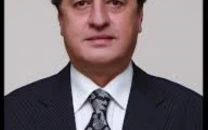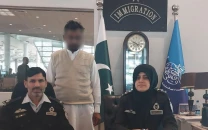Dealing with TTP and Afghanistan
TTP’s degraded tactics include target killing for maximum effect, opportunity ambushes and IEDs

The inevitable is happening consequent to a faulty understanding given to the criminals of TTP by interlocutors during failed negotiations. The negotiators sadly lacked a deep socio-psychological understanding of the dynamics; and their principal motivation seemed elevation in rank and prestige by grabbing a deal at all costs. The ‘feather in the cap’ syndrome in such complex environment can be catastrophic as the unfolding situation substantiates. Credit-taking and following faulty and half-backed recipes can lead to greater undoing.
However, the situation can still be redeemed with relative facility, if further time is not lost in dithering, vain expectations and fearing the fear. It wasn’t long ago that the TTP was soundly defeated, forcing it to shift its base of operations across border into the porously governed Afghanistan, ruled then by the Ashraf Ghani cabal, under the US-NATO watch.
State and its Army never negotiate with terrorists. The TTP conglomerate is a grouping of some 13 smaller factions with varying degree of motivation ranging from pure criminality to aspirations for Sharia rule, in a distorted understanding of Islam and Pakistan. Its strategy is to pressurise the Government of Pakistan to bargain for re-entry into native areas on favourable terms, as the Afghan hospitality might run out sooner than later. Sharia and Islamism would remain its bogey. TTP’s demands for reversal of FATA merger, carrying arms, prisoners release, payment of reparations, etc are non-negotiable being deliberate over-ask.
TTP’s degraded tactics include target killing for maximum effect, opportunity ambushes and IEDs. Suicide bombing (fidayee attacks) have re-commenced. The Tehreek aims at eroding public confidence in government and law enforcement agencies following its Swat model.
In one’s assessment, the TTP potential for large-scale attacks stands degraded. Its culminating point is nearing, and there are splits within its Swat, Bajaur and Waziristan chapters, and between the ideologues and criminals.
Afghanistan is the TTP’s Achilles heel. The Afghan swamp would dry up for TTP due to its spoiler potential on the Afghan soil; IEA’s desire to control its territory in totality; and TTP’s space requirements for operational cohesion, and dedicated logistics. The Group’s dilemma is overdue and constrained Afghan hospitality and IEA’s explicit commitments under Doha Agreement to restrain hostile usage of its territory. Hence the hurry for dialogue and desire for settlement.
However, dialogue, if and once the State deems right, should be from a position of strength, and it should be on TTP’s request, and conducted through low-ranking officials only. DG ISI has no business attracting the limelight in a poor show of hubris and political antics.
Second, the dialogue (again, if inevitable) be conducted under the established lar (way-fare) in accordance with the riwaj (tribal customs) and on Pakistan’s khawra (land). The party interested has to come to the place of choosing by the mother institution (Pakistan).
Third, the Islamic Emirate cannot be our interlocutor. It was our good offices that were beneficially used for IEA in not so recent past. Expecting IEA to evict TTP from the Afghan soil now is naiveté, for reasons previously explained; much that Kabul would badly want to extend control over the TTP enclave and ISIS areas of influence. So, now that we have a failed experiment in dialogue, let us not reinforce the failure.
Fourth, the Jirga strategy has pitfalls, as it demonstrates weakness and indecisiveness on the part of the State. The government should deal through its officials under complete political ownership, without outsourcing the process to the Military and/or the Intelligence agencies. Yes, their input and advice are included and benefited from. And this consultative process is expandable to include veteran political officials, academics, notables and bureaucrats, as needed. This is a Ministry of Interior problem and needs a whole of government response. A special cell for the purpose would be a good idea.
Fifth, the ‘reconcilables’ need to be separated from the ‘irreconcilables’ during the rapprochement phase, when the time is right. And the right time is once the TTP is at its weakest. Repatriation of reconcilables should be under an arduous screening process, mentioned in earlier writings, using tribal ethos, family undertakings and legal recourse, commensurate with the baggage and residence of the elements wanting to come back.
Here again, since most TTP cadre has local blood on its hands, it demands repatriation in groups carrying arms, which is non-negotiable. The best course for TTP ‘black cadre’ is to assimilate and live in Afghanistan, to age and fade away, like the Arab Mujahideen in erstwhile FATA. Pakistan should logistically facilitate this settlement with IEA, as deemed appropriate.
Sixth, we do not seem to have a pervasive interface with all factions within IEA. The IEA is internally divided over TTP. Qandahari ideologues see TTP in much sympathetic light, then the pragmatic Khostwal Haqqanis. Reportedly the younger leadership under Mullah Yaqoob, the son of Mullah Omar, is fluctuating towards a more pragmatic worldview. In this milieu, as a major single effort, all lines of communication be opened with Mullah Haibatullah Akhundzada to garner his support, and elicit religious decrees against TTP-incited religious-based violence targeting Pakistan.
Seventh, while all of the above takes place, State and its agencies should continue with selective military and Intelligence-based Operations (IBOs) relentlessly, ceding no quarters. NACTA recommendations be implemented and greater security coordination ensured among stakeholders. And most importantly, in perceptual domain, State must never again allow people to sit over the fence, like in Swat…earlier.
In Pak-Afghan bilateralism under IEA, in addition to the above TTP-specific recommendations, there is a greater need to “conceptualise the problem” as there are frequent angry outbursts by the detractors of Pak-Afghan amity every time there is localised border flare-up.
The conceived parameters (constants) of Pak-Afghan ties are woven through neighborhood and common geography; linkages of Afghan situation/stability — good or bad — with Pakistan and the region: and Pakistan’s direct stakes in Afghan peace, given the demography and proximity of Khyber-Pakhtunkhwa and Balochistan. Additionally, it must be noted that Afghan society and politics are in a state of flux; and Islam cannot be separated from Afghans. Even if the trade bonus is underplayed, the geo-strategic dividend of a relatively peaceful, less militarised and less hostile Afghanistan would compel our decision-makers to shun any animosity towards Afghanistan.
However, besides the cited constants, TTP remains the only variable in Pak-Afghan relations. Next week we would discuss the prevalent specifics of the Pak-Afghan relationship.
Published in The Express Tribune, December 22nd, 2022.
Like Opinion & Editorial on Facebook, follow @ETOpEd on Twitter to receive all updates on all our daily pieces.














COMMENTS
Comments are moderated and generally will be posted if they are on-topic and not abusive.
For more information, please see our Comments FAQ